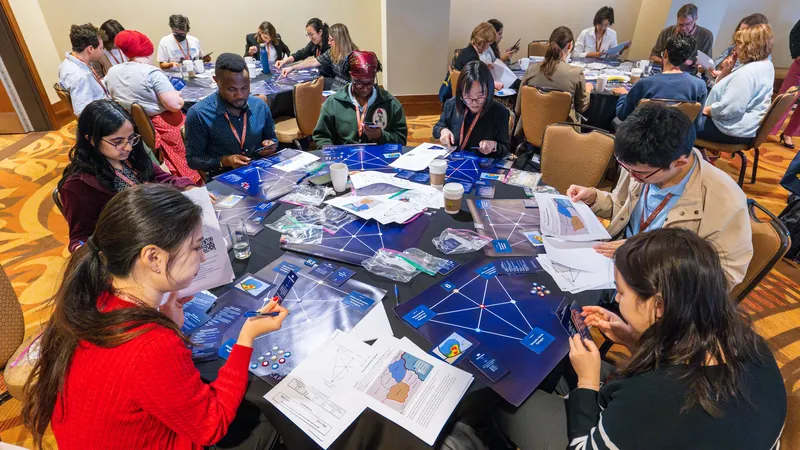
Game Over for Disease: Experts Simulate Outbreaks to Save Lives!
2024-10-28
Author: Siti
In a unique and engaging effort to prepare for future outbreaks, epidemiologists, researchers, and public health officials converged at The University of Texas at Austin for an intense disease outbreak simulation exercise. This eye-opening gathering wasn't just another game night; it was part of the epiEngage network, a pivotal initiative backed by the Centers for Disease Control and Prevention (CDC) to enhance the capabilities of public health leaders nationwide.
The simulation leveraged lessons learned during the COVID-19 pandemic, specifically the staged alert system implemented by the City of Austin. This innovative framework, based on research conducted by Professor Lauren Ancel Meyers and her team, proved effective in mitigating the impact of the virus. Mayor Steve Adler emphasized the significance of these efforts, stating that if Texas had mirrored Austin-Travis County’s COVID death rate, it could have avoided over 25,000 deaths.
Meyers, who leads the Center for Pandemic Decision Science at UT and is involved with the Center for Advanced Preparedness and Threat Response Simulation (CAPTRS), oversaw the simulation dubbed “The Reliability Game.” This intriguing exercise mimicked the meticulous work of detectives piecing together clues to solve a crime, only in this case, the goal was to uncover the source of a disease outbreak.
Participants navigated through two rounds of evidence gathering. Initially, they received segmented information about symptoms and regional contexts. In the second round, they were introduced to sources like medical reports and social media trend analyses, which guided their decision-making. The exercise fostered group discussions, allowing players to leverage diverse perspectives—a crucial aspect of epidemiology.
Samantha Groppell, a lead epidemiologist from Dallas County with experience in previous outbreaks like Ebola and mpox, mentioned that the simulation felt like a standard day at work but was enriched by the inclusion of individuals from different disciplines, such as data scientists. “It’s fascinating to hear from people who view the problem differently,” she noted, highlighting the value of interdisciplinary collaboration.
The initial hypothesis leaned towards a waterborne or foodborne origin of the outbreak. However, the narrative shifted when it was revealed that a previous claim on the effectiveness of antibiotics originated from an AI algorithm analyzing social media. Bryce Holloway, a graduate student in Meyers' lab, voiced concerns about the reliability of AI-generated data in real-world scenarios, stressing that traditional epidemiological methods, particularly patient interviews, remain indispensable.
Ultimately, the simulated outbreak was linked to mosquito transmission, underlining a critical lesson: the importance of integrating diverse data sources and recognizing even the smallest vectors can have profound impacts on public health.
This innovative approach represents a vital strategy in public health preparedness, ensuring that experts are ready to tackle the next infectious threat effectively. As the world continues to navigate the aftermath of the COVID-19 pandemic, initiatives like this simulation serve as crucial reminders of the lessons learned and the steps necessary to protect communities.
Curious about how these simulations could impact real-world disease tracking? Click here to discover more about the future of pandemic preparedness and how you can contribute to a healthier world!


 Brasil (PT)
Brasil (PT)
 Canada (EN)
Canada (EN)
 Chile (ES)
Chile (ES)
 Česko (CS)
Česko (CS)
 대한민국 (KO)
대한민국 (KO)
 España (ES)
España (ES)
 France (FR)
France (FR)
 Hong Kong (EN)
Hong Kong (EN)
 Italia (IT)
Italia (IT)
 日本 (JA)
日本 (JA)
 Magyarország (HU)
Magyarország (HU)
 Norge (NO)
Norge (NO)
 Polska (PL)
Polska (PL)
 Schweiz (DE)
Schweiz (DE)
 Singapore (EN)
Singapore (EN)
 Sverige (SV)
Sverige (SV)
 Suomi (FI)
Suomi (FI)
 Türkiye (TR)
Türkiye (TR)
 الإمارات العربية المتحدة (AR)
الإمارات العربية المتحدة (AR)